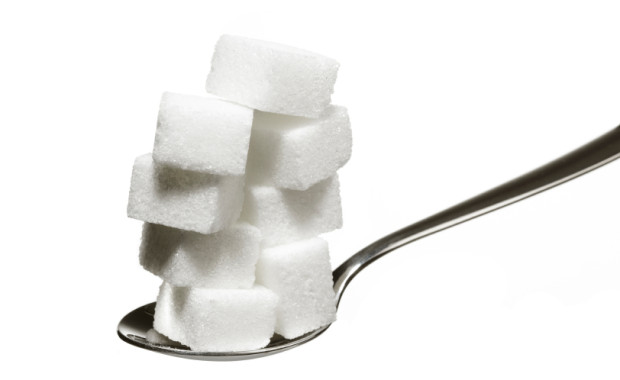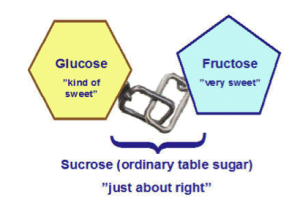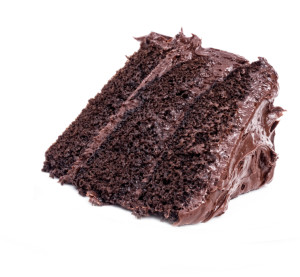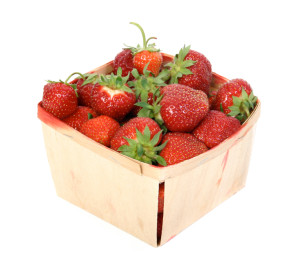The Bottom Line:
- Don’t get deceived by the fact that just because fructose is natural it is ok to have as much as you want.
- Most of us consume far too much fructose (in the form of refined sugar).
- Fructose consumed as part of a whole fruit is not bad for you.
Key Points:
- Fructose in excess is worse than excess glucose.
- Eating fructose doesn’t make you feel full and might even make you feel hungrier.
- Excessive consumption of fructose is associated with diabetes and obesity.
- Eating fructose increases the triglycerides in your blood – (a type of fat which is more closely correlated with having a heart attack than cholesterol is).
What is fructose?
Fructose is a type of sugar.
Is fructose a natural substance?
Yes, but so is arsenic.
Is fructose bad?
Only if you have too much of it – as is the case with most toxins – obvious but worth pointing out.
Is fructose worse for you than other sugars are?
In excess, yes.
Why do we like fructose so much?
Because it tastes very sweet, and we are biologically hard wired to like sweet things.
Basic chemistry:
Sucrose is the name of the sugar that most of us consume.
50% Glucose + 50% Fructose = 100% Sucrose
How sweet is fructose?
Fructose tastes sweeter than Sucrose, which tastes sweeter than Glucose.
i.e. Fructose>Sucrose> Glucose
Sucrose = Regular refined sugar = An ideal combination of fructose and glucose
There is now overwhelming evidence to suggest that eating fructose in large quantities is detrimental to one’s health.
One of the most important things about toxic substances is their dose and over what space of time you consume them.
For example if you were to drink 5 glasses of water in the space of one hour you might feel uncomfortable, but it is unlikely to kill you.
Drinking 50 glasses of water over the space of 1 week wouldn’t do you any harm either; but drinking 50 glasses of water over the space of one hour might kill you.
Even something as natural and essential as water can be toxic when consumed under certain circumstances.
And so it is with fructose – a little bit occasionally is fine; a large amount continuously is toxic.
To drive home the point that ‘natural’ isn’t necessarily good, here are a few examples of potentially lethal naturally occurring substances – HIV, mercury, plutonium, ricin (from castor beans), tetrodotoxin (from puffer fish); one most certainly wouldn’t want even minuscule amounts of these in one’s system.
A quick look at sugar statistics:
Sugar consumption in the UK over the last 300 years:
| Year | UK Sugar consumption per person per year |
|---|---|
| 1704 | 4 pounds |
| 1800 | 18 pounds |
| 1901 | 90 pounds |
| 1950 | 100 pounds |
Sugar consumption in the USA in the last century:
| Year | USA Sugar Consumption per person per year |
|---|---|
| 1900 | 45 pounds |
| 2000 | 105 pounds |
| 2010 | 132 pounds |
As you can see, we can’t get enough of the refined white stuff and are eating more and more of it.
It sounds counter-intuitive that a substance found naturally in fruit could be harmful – why should it be ok to eat fructose in fruit, but not in other foods?
One of the main differences between eating fructose in whole fruit and refined fructose in cakes and other sweet foods, is that it is difficult to eat it to excess when it is consumed as part of a whole fruit, whereas it is extremely easy to eat refined sugar to excess.
With toxic substances, how frequently you consume them matters too – 2 slices of cake every month might not be disastrous in the long run, but 2 slices of cake every day would definitely not be good for you.
A single slice of chocolate cake has as much sugar in it as a whole pound of strawberries does – it would be a cinch to eat a couple of slices of cake in one go, but not many would plough through a couple of pounds of strawberries in one sitting.
Two different foods with the same amount of fructose in them:
Besides the amount of fructose, a couple of other factors come into play when comparing the fructose in fruit and cake:
- The concentration of fructose in fruit is low.
- The fibre in fruit slows down the absorption of fructose.
Why do the concentration and absorption rate matter?
The high concentration of fructose in cake (without any fibre to slow down its absorption) causes a rapid ‘hit’ of fructose to enter liver.
Your liver can cope with small amounts of fructose intermittently, but not with a large continuous influx.
It’s a bit like the difference between a stream, a river and Niagara Falls – a small trickle of fructose into the liver from fruit is ok, a larger influx from cake is bad, and the sugar from a sweet drink would be the equivalent of a Niagara-like deluge.
Plus the high vitamin C and antioxidant content in fruit provide a safeguard against some of the untoward consequences of fructose.
Are smoothies and juices ok?
You might have been under the misapprehension that drinking a smoothie is ok because the whole fruit is puréed and the fibre is still there, but unfortunately it’s not that simple.
The making of a smoothie entails putting the fruit in a blender, and the blender blades destroy the insoluble fibre (aka cellulose, which is the ‘framework’ of the fruit). So although the soluble fibre is still there, the insoluble fibre is torn to shreds, and the fructose will be absorbed just as fast as if the smoothie had almost no fibre.
Basically you need both the soluble and insoluble fibre in fruit to slow down the absorption of fructose.
The upshot of drinking a smoothie is that your liver gets a rapid ‘hit’ of concentrated fructose (the same as when you eat a dessert made with sugar); it is this sudden and swift flow of fructose into the liver, as well as the total amount that matters.
I don’t know for sure, but I would imagine that a vegetable smoothie would not be as bad as a fruit smoothie, because generally speaking vegetables are much lower in fructose content than fruits are.
Fibre also exerts beneficial effects on our gut bacteria, which in turn might mitigate the possible harmful effects of sugar in fruit.
And fruit juices which have neither the soluble nor the insoluble fibre in them are even worse than smoothies.
Sorry to destroy the myth that smoothies and juices are good for you!
Here is a study which shows that fructose from whole fruit is not harmful.
Why is it that glucose is ok, but fructose isn’t?
Both glucose and fructose are sugars, but they are metabolised very differently, causing fairly divergent effects.
Also, when you consume them, glucose tells you that you’ve had enough, and fructose tells you to keep eating.
(Glucose suppresses your appetite and fructose stimulates your appetite via their effects on insulin, leptin and ghrelin – some of the hormones which control your appetite).
Why do they do this?
From an evolutionary perspective: Hunter-gatherer man would fill up on fruit when it was available (seasonally – not all year round), and store the fructose from the fruit as fat for the coming winter. And because fructose doesn’t make you feel full, it would have been easier to pig out on fruit, which is what man would have needed to do to maximise fat stores for a forthcoming freezing winter (obviously before the advent of refrigerators);
i.e. we are hard wired to like sweet things so that we can fatten up in times of plenty to build up fat stores for leaner times.
All refined sugars are unhealthy, so I wouldn’t recommend going overboard on glucose, but if you are going to have something sweet, it might be better to sweeten it with refined glucose rather than with refined fructose.
10 reasons to limit refined sugars:
References




